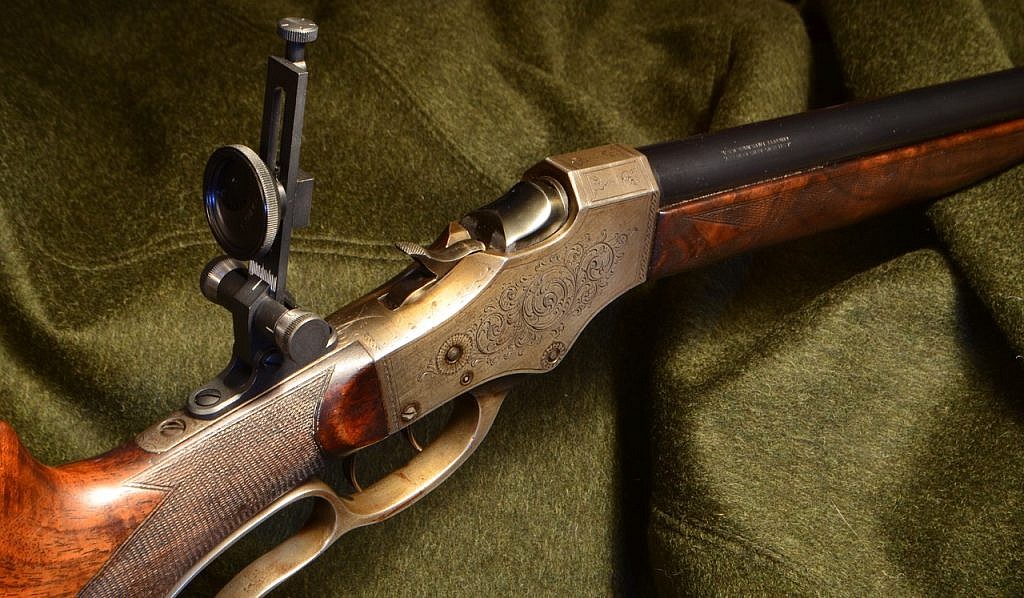
by Terry Wieland
Everyone needs a purpose and, for many years, one of mine — a minor one, but nagging — was a desire for a high-grade Stevens .22.
Not a “boy’s rifle” of the Stevens Favorite, or Crack Shot, or Sure Shot variety, but one of their beautiful No. 44 or 44½ target models, rifles intended for the top-stratum Schützen crowd when Harry M. Pope was associated with the company and “Pope-Stevens” signified the best.
This was an all-too-brief period — only five years, roughly 1901 to 1906 — during which time Stevens retired the No. 44 action (a rocking block vaguely similar to the German Aydt) in favor of the falling-block 44½. The latter was manufactured for only about 12 years. Had it come earlier, or been continued longer, it would probably have been recognized as the finest of all American single-shot actions.
This is not just my opinion: James J. Grant, author of five books on single-shot rifles between 1947 and 1991, and Ned Roberts and Ken Waters, co-authors of a later one, thought so, too. No, it wasn’t designed by John M. Browning, which rules it out in the minds of some, but it was superior to Browning’s Model 1885, manufactured by Winchester, in several ways, and inferior in none. QED.

It is now a century since Savage took over the Stevens company amid the settling dust post-1918 and began the steady process of diminishing the name from a maker of fine rifles to a low-end line of knockabout single-shots and barn-door shotguns. This is not unusual: Stevens itself did something similar when it acquired the Maynard assets in the 1890s and produced the short-lived and forgettable Stevens Maynard Junior, which is now a collector’s item solely from rarity.
Shooters today can be forgiven if they hear the name Stevens and look askance, wondering what could bear that name and be even mildly desirable. But the J. Stevens Arms & Tool Company of Chicopee Falls, Massachusetts, dating from 1864 and continuing until 1916, when it ceased civilian production and went whole hog into military stuff, was bought out, and then collapsed in the post-war reconstruction, was, at one time, a major player and producer of some of the most beautiful and interesting rifles ever made in America.

One should add that Stevens, working with Union Metallic Cartridge, introduced the .22 Long Rifle, the most successful cartridge, rifle or pistol, ever developed. Purely on that account the name should command respect.
On the bright side, the Stevens mystique — or lack thereof — often results in some really lovely rifles selling for prices far below what the same quality would bring if they bore the name Ballard, Maynard, or Winchester.
Mixed in with this is an almost unbelievable mish-mash of historical information about them — a result of the Stevens company’s quixotic and often inexplicable approach to numbering models, reusing names, and producing catalogues with no rhyme or reason as to dates or model numbers. If Stevens had set out deliberately to confuse and mystify collectors a century hence, it could not have done a better job.
At any rate, finally, after several decades (literally!) of searching, a Stevens Model 49 Walnut Hill, in .22 Long Rifle and with the No. 44½ action, came on the block at Rock Island. For reasons known only to themselves, Rock Island estimated it would go for $1,000 to $1,500. Single-shot expert Lee Shaver opined that was “absurdly low.” I figured it should go for at least twice that, and when the dust had settled I parted with a tad more than $4,000 for it, tax included.
Did I overpay? Maybe.
But, like the stock market, which is sometimes overly enthusiastic but never, in the long run, wrong, the auction house is a great determiner of value. And since I had to vanquish at least five other bidders along the way, the last conceding reluctantly when the bidding topped three grand, I was not alone in my estimation of its desirability.
In the years to come, it may go up in value, and it may not. My heirs, whomever they might be, may sell it for a song. I, meanwhile, will have enjoyed (!) a lot of frustration and disappointment attempting to improve my Schützen abilities with it.
This is what passes for fun in my crowd, and for this, we part with big bucks. You explain it. I can’t.
______________________________________________________________________________
Gray’s Shooting Editor Terry Wieland wishes for a lot of things and sometimes ends up wishing he hadn’t. So far, the Walnut Hill is not one of them. It’s pretty to look at, even if his targets are not. At least, not yet.
